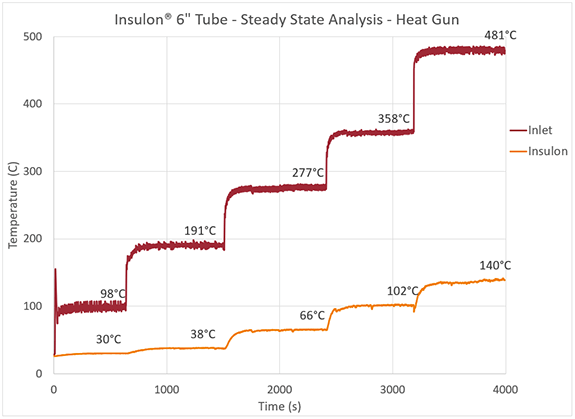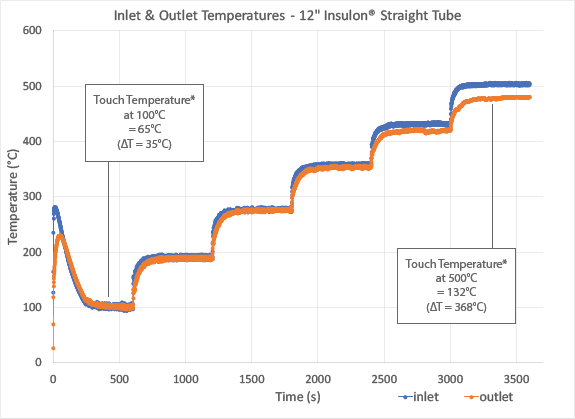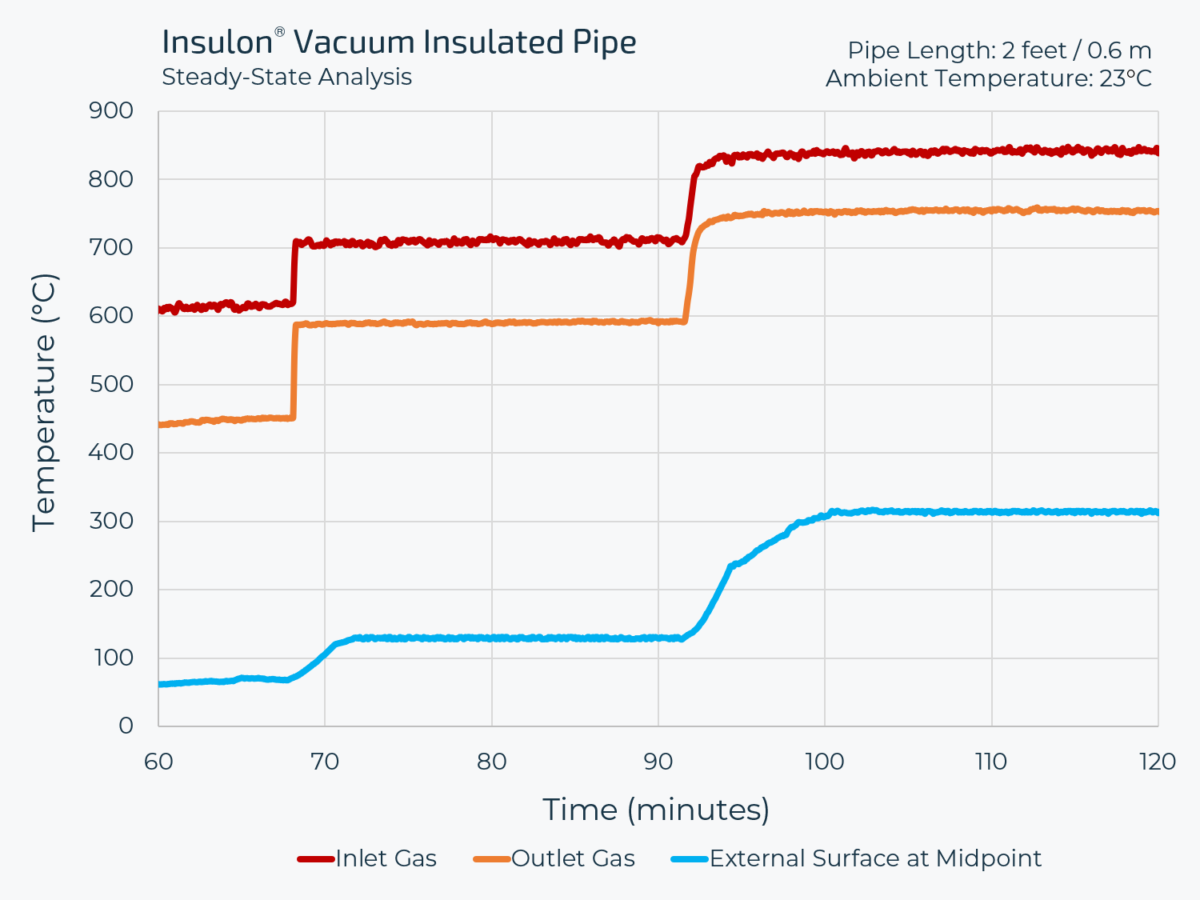
Surface Temperature Analysis
Insulon Vacuum Jacketed Hose, LP, 1/2″ ID, 6 ft. Length
In this analysis, an Insulon vacuum jacketed transfer hose provides thermal insulation for high-temperature air. The chart illustrates the temperature difference between the process gas and the outer surface (aka “touch temperature) of the hose. When the incoming air was at 900°C (1652°F), the steady-state temperature difference was over 640°C (1150°F). Ambient temperature was 23°C.

Thermal Cycling Analysis
Insulon® Component, 1 mm thick
Thermal cycling tests are conducted to measure the ability of vacuum insulation to withstand cyclical temperature exposures. In this analysis, Insulon® advanced vacuum insulation was exposed to 20,000 thermal cycles at 450°C. Consistent insulation performance demonstrates our ability to maintain the integrity of the vacuum space for many cycles. For this test, one heat cycle was defined as a 3-minute ramp up during which the component reaches steady-state, followed by a 2-minute cool-down period. Ambient temperature was 23°C.

Surface Temperature Analysis
Insulon® Tube, 1.1 mm thick
Insulon® vacuum insulation can be designed for high-temperature applications up to 815°C or higher, depending on the product. In this analysis, hot air from a heat gun was transported through a 6-inch long Insulon® tube with 1.1mm overall wall thickness and allowed to reach steady state. The graph above compares the external surface temperature of the vacuum insulated tube at steady-state to the hot air temperature at the inlet. External surface temperature was measured at the midpoint (3 inches along the 6-inch tube). Ambient temperature was 23°C.

Inlet-Outlet Temperature Drop Analysis
Insulon® Tube, < 2 mm thick
Temperature drop can be measured by comparing the inlet and outlet temperatures of material entering and exiting a tube or pipe. In this analysis, a 1/4″ ID vacuum insulated tube with 1.6mm overall wall thickness transported hot air from a heat gun while inlet and outlet temperatures were recorded. In addition, external surface temperatures were recorded at the 100°C inlet and 500°C inlet. External surface temperature was measured at the midpoint (6 inches along the 12-inch tube). Ambient temperature was 23°C.

Inlet, Outlet, and Surface Temperature Analysis
Insulon® Tube, < 2 mm thick
In this analysis, a 2-foot-long vacuum insulated tube transported high-temperature gas while inlet, outlet, and external surface temperatures were recorded. External surface temperatures were recorded at the midpoint (1 foot along the 2-foot tube). Ambient temperature was 23°C.
Need even higher performance?
For applications that require our peak performance, we install multi-layer insulation (MLI) inside the vacuum annulus.
